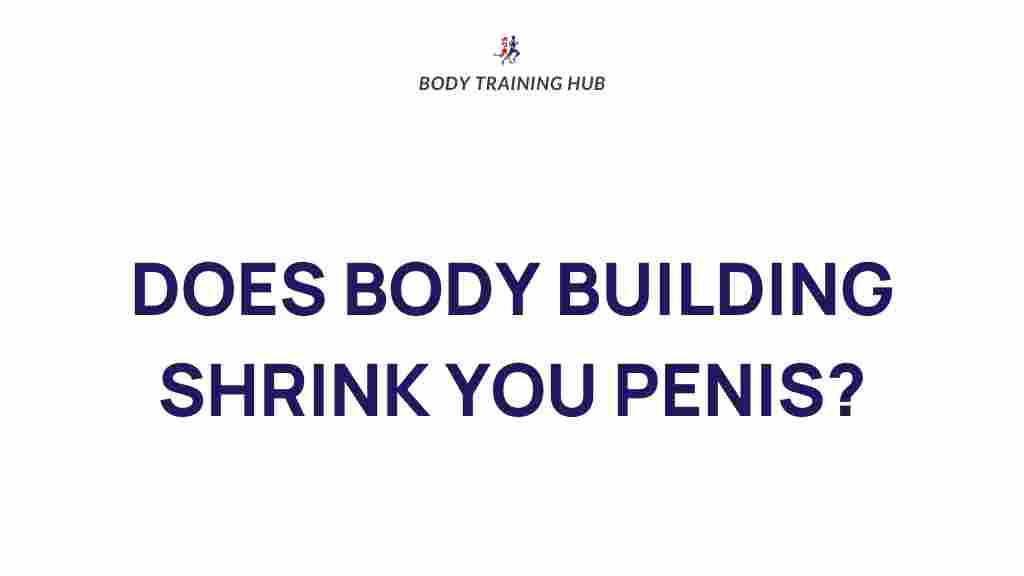The Surprising Impact of Bodybuilding on Male Anatomy
Bodybuilding is more than just lifting weights and looking good in the mirror; it profoundly affects male anatomy and physical changes. As men engage in bodybuilding, they experience various transformations that extend beyond mere muscle growth. This article dives deep into the impact of bodybuilding on male anatomy, debunks common myths, and provides insights into the physical changes that can occur. Whether you’re a seasoned bodybuilder or a novice at the gym, understanding these aspects is crucial for maximizing your results and maintaining a healthy perspective on fitness.
Understanding Male Anatomy and Bodybuilding
To appreciate the impact of bodybuilding on male anatomy, it’s essential to understand a few key aspects of male physiology:
- Muscle Composition: Men generally have a higher percentage of muscle mass compared to women, which is influenced by testosterone levels.
- Bone Density: Male bones tend to be denser and larger, allowing for greater potential muscle attachment and growth.
- Fat Distribution: Men typically store fat in the abdominal area, which can affect overall body composition and appearance.
When men engage in bodybuilding, they challenge their bodies to adapt to increased loads, which leads to various physical changes. These changes can enhance not only muscularity but also overall health and well-being.
The Process of Muscle Growth
Muscle growth, scientifically known as hypertrophy, is a fundamental aspect of bodybuilding. Here’s a step-by-step process of how this occurs:
- Mechanical Tension: Lifting weights creates tension in the muscles, which stimulates muscle fibers to adapt and grow.
- Muscle Damage: Intense workouts cause micro-tears in muscle fibers, a necessary process for growth.
- Metabolic Stress: The accumulation of metabolites during high-rep lifting can trigger hormonal responses that promote muscle growth.
- Recovery and Nutrition: Proper rest and nutrition, including protein intake, are crucial for repairing and building new muscle tissue.
These steps illustrate how bodybuilding can lead to significant changes in male anatomy, enhancing strength, endurance, and overall physical appearance.
Physical Changes Resulting from Bodybuilding
Engaging in bodybuilding can lead to several notable physical changes in male anatomy:
- Increased Muscle Mass: The most apparent change is the increase in muscle size and strength, particularly in the arms, chest, and legs.
- Improved Posture: Strengthening the back and core muscles leads to better posture and reduced back pain.
- Enhanced Metabolism: Increased muscle mass boosts resting metabolic rate, aiding in fat loss and overall health.
- Hormonal Changes: Regular weight training can lead to increased testosterone levels, which may enhance mood and energy levels.
- Better Body Composition: Bodybuilders often experience a decrease in body fat percentage, leading to a more defined physique.
These physical changes are not just aesthetic; they can also contribute to improved health markers such as cardiovascular fitness and metabolic health.
Debunking Common Myths About Bodybuilding
There are many myths surrounding bodybuilding and its effects on male anatomy. Here are some of the most prevalent misconceptions:
- Myth 1: Bodybuilding Makes You Bulky: While bodybuilding can increase muscle mass, it does not necessarily lead to a bulky appearance. Many bodybuilders focus on lean muscle growth, resulting in a toned physique.
- Myth 2: Weightlifting is Dangerous: When performed with proper technique and safety measures, bodybuilding is safe and beneficial for health.
- Myth 3: You Need Supplements to Build Muscle: While some supplements can support muscle growth, a well-balanced diet and consistent training are the most critical factors.
- Myth 4: Cardio is Not Necessary: Cardiovascular exercise is essential for overall health and can complement bodybuilding routines effectively.
Understanding these myths can help individuals approach bodybuilding with realistic expectations and a focus on health rather than just aesthetics.
Challenges and Troubleshooting Tips in Bodybuilding
While bodybuilding can lead to significant improvements in male anatomy, it also comes with challenges. Here are some common issues and tips to address them:
- Plateaus: If progress stalls, consider changing your workout routine or increasing intensity to stimulate growth.
- Injury Risk: Always prioritize proper form to avoid injuries. Incorporate rest days and listen to your body.
- Nutrition Issues: If you struggle with muscle gain, evaluate your diet to ensure you’re consuming sufficient protein and calories.
- Time Management: If finding time to train is a challenge, schedule workouts just like any other important appointment.
For more guidance on overcoming these challenges, check out this helpful resource on bodybuilding techniques.
Conclusion
The impact of bodybuilding on male anatomy is both profound and multifaceted. From enhancing muscle growth to improving overall health, the physical changes brought about by consistent training can be remarkable. By debunking myths and addressing common challenges, men can approach bodybuilding with a clear understanding of its benefits and realities. Whether your goal is to build muscle, improve your health, or simply feel better in your skin, bodybuilding offers a pathway to achieve these objectives. Remember, the journey is as important as the destination, so embrace the process, stay informed, and enjoy the transformative effects of bodybuilding on your male anatomy.
For further reading on the topic of bodybuilding and its effects on health, visit this external link.
This article is in the category Myths & Facts and created by BodyTraining Team
